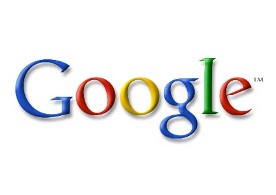 We get asked this question all the time!
We get asked this question all the time!
We also get asked for photo sizing help on:
- Google+
- YouTube
Well here is

Computing Technologies, Inc.
 We get asked this question all the time!
We get asked this question all the time!
We also get asked for photo sizing help on:
Well here is

 Here’s the WHO – WHAT- WHERE – WHY – WHEN and HOW TO when it comes to Google+ Pages for your business.
Here’s the WHO – WHAT- WHERE – WHY – WHEN and HOW TO when it comes to Google+ Pages for your business.
What is a Google+ Page?
If you’re not already familiar with Google+, it’s a social media platform that allows you to group your “friends” into Circles. Unlike Facebook where all your “friends” are lumped together, Circles let you divide your contacts into Friends, Colleagues, Family, etc. People can be part of more than one of your Circles – it’s up to you. Share things with the appropriate Circle and no need to worry about your boss seeing last weekend’s party!
The basics of Google+ http://www.youtube.com/watch?v=hC_M6PzXS9g
Google+ Pages are for businesses. Your page, profile image and recent posts are eligible to show up on the right-hand side of a relevant Google search. People can follow your Google+ Pages. Relevant posts can also show up within search results for your pages’ followers.
Why should you be on Google+ Pages?
One of the most basic reasons is Google+ integrates with all other Google services like Search, Google Places, Google Maps etc. By creating and maintaining a Google+ Page you will likely see an SEO boost. If your business is more a “brick and mortar” type with a Google Places page, having a Google+ Page will help add valuable information to your Places page.
Where will your Google+ Page show up?
Besides the already mentioned relevant Google searches, when you connect your website to your Google+ Page searches for your site can display links to any recent Google+ posts.
Who is on Google+?
According to Circle Count, a company that tracks Google+ activity worldwide, the United States, India and Brazil have the most users and those users are typically students, developers, engineers, designers and photographers. But more important is the fact that anyone who is logged into Google (eg. Gmail, YouTube) will have their search results personalized and if they or any of their Circle friends have shared your Google+ page your site would be at an advantage for outranking your competition!
When was Google+ Pages launched?
November 7, 2011. Time to join the Circle!
How to create your Google+ Page.
First you need to have a Google account. If you don’t follow this link:
https://accounts.google.com/NewAccount
Next create a Google+ Page (https://plus.google.com/pages/create). Add your company name and images to customize your page. Then, tell visitors more about your company by completing the “About” section. Be sure to including your website and a detailed description. This can help customers find you across Google.
Don’t forget:
 Have you thought of using social media marketing to:
Have you thought of using social media marketing to:A recent survey conducted by Social Media Examiner looked at these and other aspects of social media marketing. [Read the full report]
This survey found that increased exposure and increased traffic ranked #1(85%) and #2(69%) respectively.
The next most significant benefits:
This survey found that 59% of respondents are spending 6 hours or more weekly. The largest single group, representing 37.7%, spend 1 – 5 hours weekly.
Time commitment in relation to company size showed businesses with 2 – 10 employees typically spend 1 – 5 hours weekly. The same was true for the solo-owner businesses.
This survey found Facebook and Twitter continued to lead the pack as the favored social media tools (92% and 82% respectively). Even when years of experience with social media were factored in, these two still outweighed the others.
How the other social media tools ranked:
The respondents to this survey most wanted to know:
Most email providers such as Gmail, Yahoo, MSN do not allow users to send large files by email. The maximum limit in all of these email services is 20 MB – which isn’t a lot if you want to send movies, videos, or large files. The following is a list of free ways to send large files online.
YouSendIt is a file sharing service that lets uploading and sharing files of 100 MB each. The site uses an email form to send your file. Your uploaded file is available for download for only 7 days.
Mediafire provides free file hosting/sharing for files up to 100 MB.
Google.com also provides sharing capability through the Google Docs link.
Dropbox provides 2GB of storage with its free account. You can share files with anyone, even non-Dropbox users, by creating links to the files from your Public folder. Once you copy the link, you can paste it in an email, instant message, social networks, wherever you want.
 What are those crooked little black and white squares we’re seeing on store windows, magazines, packages…just about everywhere we look?
What are those crooked little black and white squares we’re seeing on store windows, magazines, packages…just about everywhere we look?They’re called QR codes – QR standing for “quick response”.
They require a QR reader on a smartphone to decipher and typically lead to a page on the web with valuable information about a product, service or even an event.
As a means of mobile marketing, QR codes represent an opportunity for businesses to directly promote to their target audience. According to a comScore survey 6.2% of smartphone users scan QR codes. This may sound like an insignificant number but keep in mind many businesses find Twitter has increased their business and Twitter touts only a 13% share of people using the web.
The demographic of those scanning a QR code with their smartphone is typically be male, between the ages of 25 to 34 and an upper income bracket.
[Read the comSource report]
Could your business take advantage of a QR code?
Here are five tips to consider:
1. Offer something of value
Don’t use a QR code to send users to your website’s homepage. Create a landing page specifically for that QR code and offer something unique that isn’t available on your site
Customize the offering for your market. If stay-at-home moms are your target, a fun contest might work. A free report would appeal to business executives. Be creative!
2. Include a Call To Action
Don’t rely on people’s curiosity! Not everyone will automatically scan your QR code. Remember to include the benefit the user will receive.
3. Help users read the QR code
These codes are relatively new so include some directions, like where to go to download a QR reader or hints on how to successfully scan the code.
4. Get a QR code
Creating the actual QR code is simple. Google has a free QR code generator. Simply enter the URL that you want users to visit and it produces the code.
[Get the Google QR Code Generator]
5. Place the QR code everywhere
Nowadays people always have their smartphones with them so don’t limit your QR codes placement to print. Think about taking advantage of your store windows, your business cards, direct mailers, packaging, on your receipts and bills.
Now that you know what QR codes are and why you should have one, get busy and create one for your business!
Need some inspiration? Check out these clever QR Code Ideas!
 How does your website look when viewed on an iPhone, Droid or Blackberry?
How does your website look when viewed on an iPhone, Droid or Blackberry?Google is testing a way to let users know when a website has been smartphone-optimized. They’re doing this by inserting a small icon next to these search results.
If you think people aren’t searching for you on their smartphones, take a look at this recent survey:
http://ansonalex.com/infographics/smartphone-usage-statistics-2012-infographic/
Google wants to be our search engine of choice by helping us identify smartphone-optimized sites and delivering a great user experience.
 Do you ever use the same password for multiple websites?
Do you ever use the same password for multiple websites?We all do this out of necessity. Who can remember umpteen passwords right?
Signing in to Gmail from a public computer or someone else’s computer can also get your password hacked!
There are dozens of horror stories out there recounting the havoc just such hacking has reeked on today’s digital life!
[Read “How Apple and Amazon Security Flaws Led to My Epic Hacking”]
Google to the rescue!
Setting up 2-Step Verification requires you to login into your Google account and request a verification code be sent to your phone. You then enter the verification code online to login into your account. There is a 30 day option which permits you to log in for 30 days without requesting a new code each time.
The premise of the 2-Step Verification is a hacker would need to know your password and have access to your phone in order to break into your account.
Copyright © 2024 Willow Computing Technologies Inc.
PO Box 97303 Raleigh, NC 27624-7303
Phone: 919.391.0193 Fax: 866.242.2439